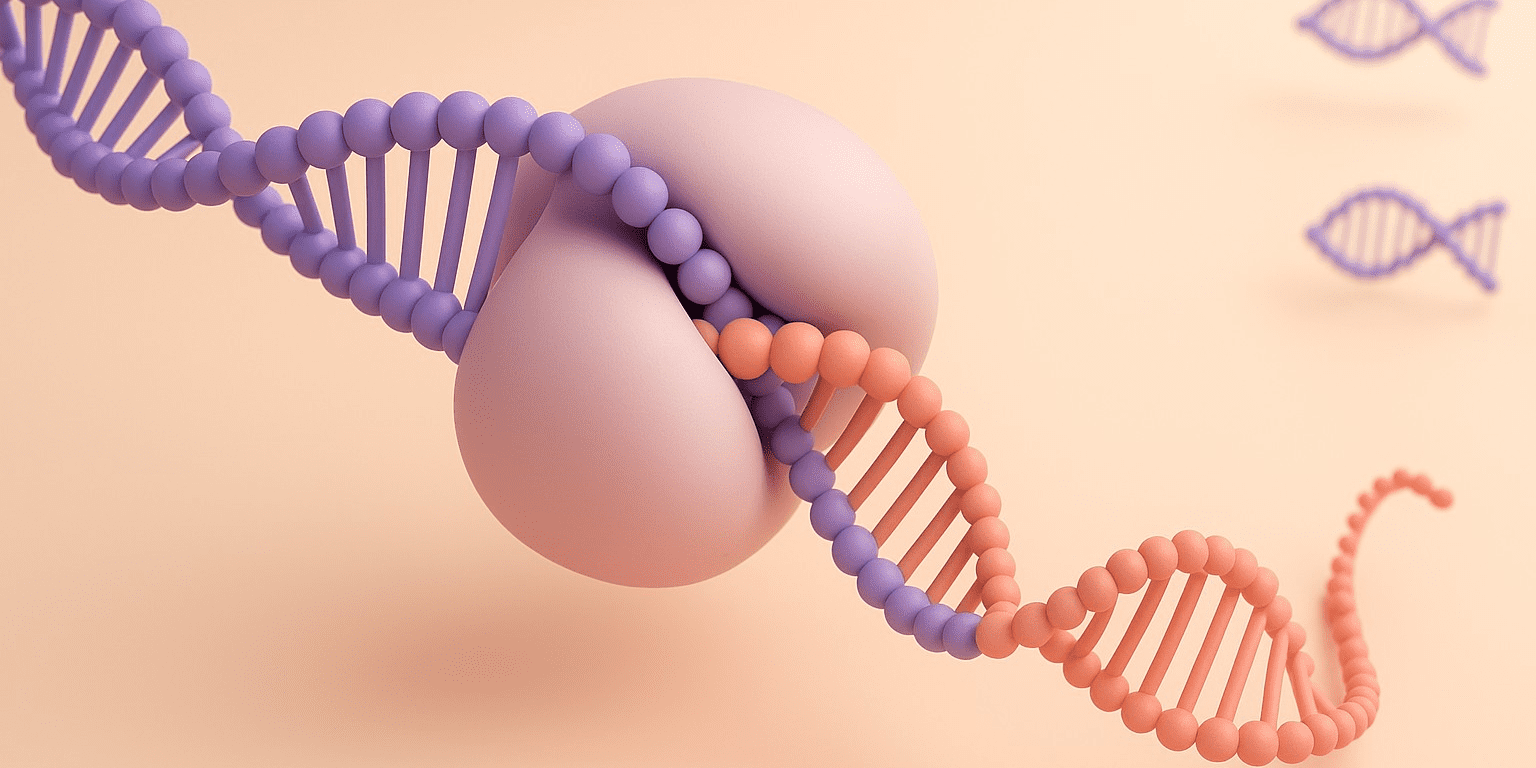- Transcription or RNA Synthesis is the process by which a segment of DNA is copied into RNA by the enzyme RNA polymerase.
- is the first step in the expression of genes, leading to the synthesis of proteins. Here’s an overview of the transcription process:
Steps of Transcription
-
Initiation:
- Promoter Region: RNA Synthesis begins at a specific region called the promoter, which is a sequence of DNA that signals the start of a gene.
- RNA Polymerase Binding: RNA polymerase binds to the promoter region with the help of factors.
- DNA Unwinding: RNA polymerase unwinds a small section of the DNA double helix to expose the template strand.
-
Elongation:
- RNA Synthesis: RNA polymerase moves along the DNA template strand, adding complementary RNA nucleotides (A, U, C, G) to the growing RNA strand.
- Direction: RNA synthesis occurs in the 5′ to 3′ direction, meaning new nucleotides are added to the 3′ end of the RNA molecule.
- Temporary DNA-RNA Hybrid: A temporary hybrid structure forms where the RNA strand is base-paired with the DNA template.
-
Termination:
- Termination Signals: Transcription continues until RNA polymerase encounters a termination sequence in the DNA.
- Release of RNA: The newly synthesized RNA strand, also called the primary transcript or pre-mRNA (in eukaryotes), is released from the DNA template.
- DNA Rewinds: The DNA double helix re-forms as RNA polymerase and the new RNA strand dissociate.
Advertisements
Post-Transcriptional Modifications (in Eukaryotes)
-
Capping:
- 5′ Cap Addition: A modified guanine nucleotide is added to the 5′ end of the pre-mRNA, protecting it from degradation and aiding in ribosome binding during translation.
-
Polyadenylation:
- Poly-A Tail Addition: A sequence of adenine nucleotides is added to the 3′ end of the pre-mRNA, further protecting it from degradation and assisting in export from the nucleus.
-
Splicing:
- Intron Removal: Non-coding sequences (introns) are removed from the pre-mRNA.
- Exon Joining: The remaining coding sequences (exons) are joined together to form the mature mRNA.
-
Transcription Regulation
- Transcription Factors: Proteins that bind to specific DNA sequences, regulating the binding of RNA polymerase to the promoter.
- Enhancers and Silencers: DNA sequences that can increase or decrease the rate of RNA Synthesis when bound by specific proteins.
Disorders Associated with Transcription
- Genetic Disorders: Mutations in promoter regions, RNA Synthesis, or RNA polymerase can lead to various genetic disorders by affecting gene expression.
- Cancer: Dysregulation of factors can lead to uncontrolled cell growth and cancer.
Advertisements

